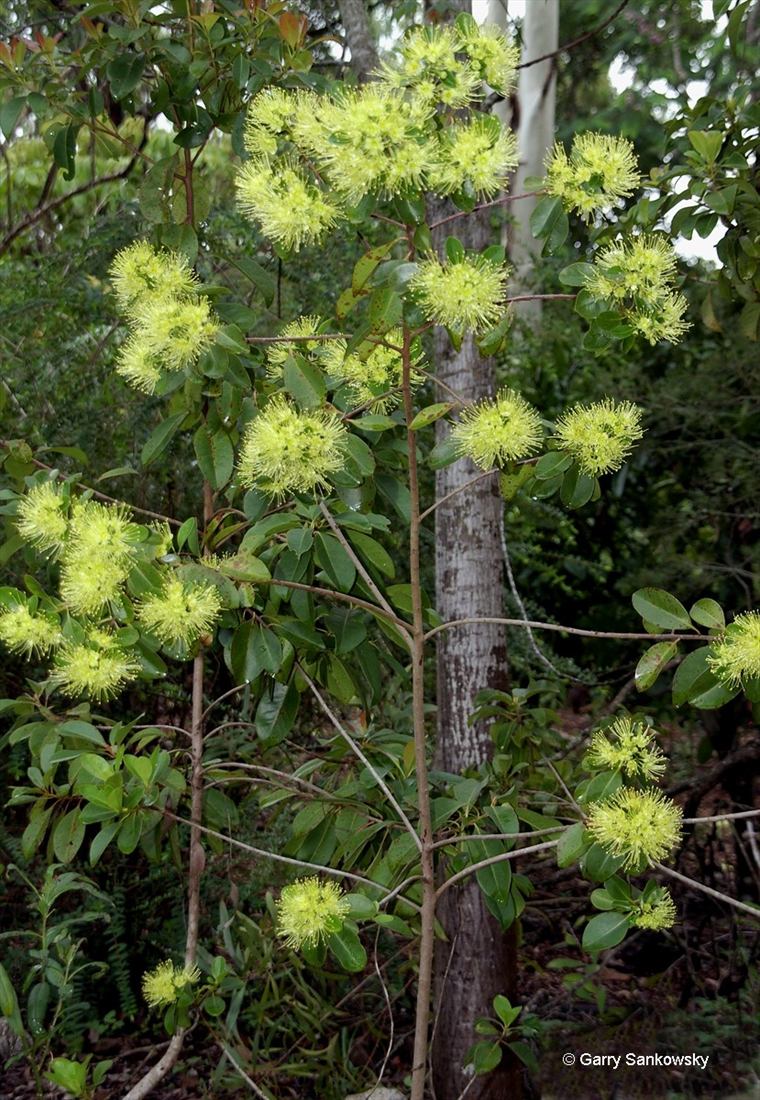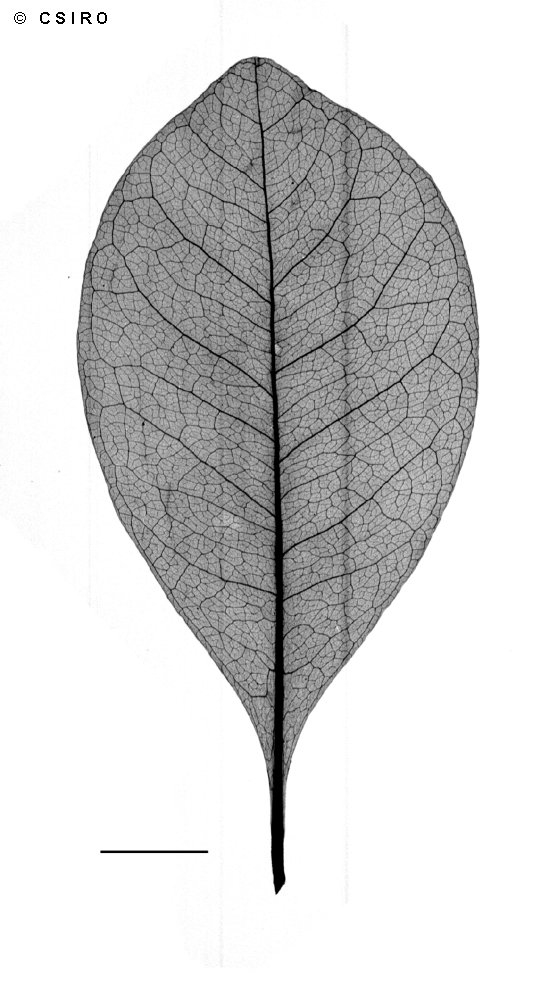Australian Tropical Rainforest Plants - Online edition
Xanthostemon arenarius Peter G.Wilson
Click/tap on images to enlarge

Flowers [not vouchered]. © G. Sankowsky

Habit, leaves and flowers [not vouchered]. © G. Sankowsky

Leaves [not vouchered]. © G. Sankowsky

Scale bar 10mm. © CSIRO

Cotyledon and 1st leaf stage, epigeal germination. © CSIRO
Family
Wilson, Peter G. (1993) Telopea 5(2): 305. Type: Queensland, 9.2 km from Elim on the road to Hopevale, J.R.Clarkson 8716 & V.J.Neldner, 23 May 1990; holo NSW; iso MBA,QRS,K.
Stem
Grows into a small to medium sized tree but sometimes flowers and fruits as a shrub.
Leaves
Flowers
Calyx lobes about 1.5-3 mm long. Petals obovate, about 4.5-6.5 x 3-5.5 mm. Stamens about 20, filaments yellow, about 10-19 mm long inserted in a hole or recess in the base of the anther. Anthers about 1.1-1.5 mm long. Style about 18-22 mm long. Ovules about 20 per locule, arranged in a whorl on the placenta.
Fruit
Fruits about 8-12 x 10-15 mm, calyx lobes persistent at the base of the capsule. Seeds not winged, about 4.2-6 mm long.
Seedlings
Distribution and Ecology
RFK Code
1057
Copyright © CSIRO 2020, all rights reserved.

Web edition hosted at https://apps.lucidcentral.org/rainforest




